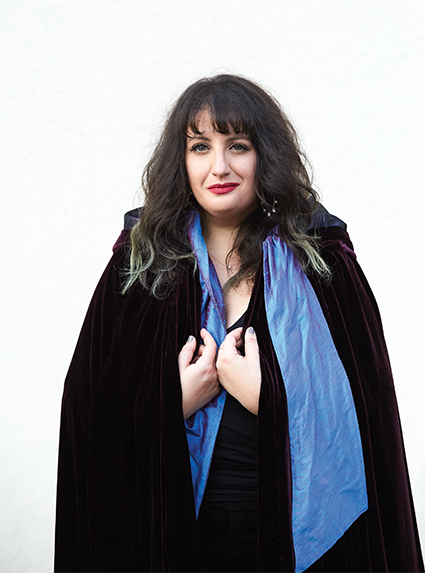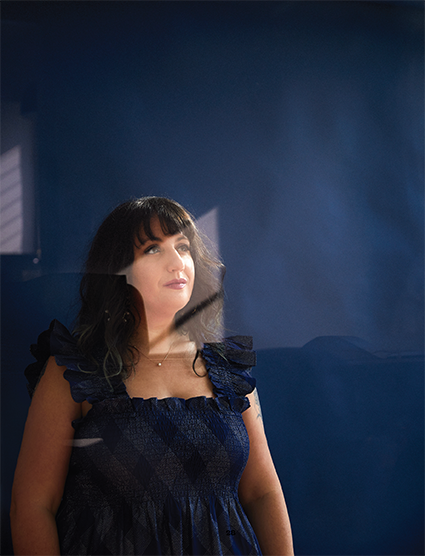One to Watch has many different scenarios, twists and turns. But it doesn’t feel like a jam-packed novel; it feels like a very clear arc.
It took about four drafts to get to that arc. I had to force myself to examine whether every scene was building toward the next shift in the arc. If it’s not, why is it even there? With screenwriting, every page is money. It represents hours of filming, time and pay. So you’re trying to tell the story with as few pages and as few lines of dialogue as possible. You need rigorous discipline.
I can think of many acclaimed books that would have benefited from discipline, structural and otherwise. I want to switch gears to your work on political campaigns and progressive causes. Did those experiences inform this book?
Absolutely! The idea of writing about a woman who stars on a reality television show drew on my experience working for Hillary Clinton, of feeling like suddenly a lot of strangers were looking at me and interested in my life in a way they never had been before. I remember one night a friend texted me, “You’re on Stephen Colbert!” And I was like, “I’m not on Stephen Colbert. I’m at home taking a sleeping pill, trying to get four hours of sleep.” Some of us had dressed up as Hillary for Halloween for a post on the campaign blog. I was one of them, and a photo of me was on Colbert. Another day, a photographer from
Time was in the office, and I wasn’t paying attention. A photo of me at my desk looking haggard and unhappy ended up in
Time. That photo is still, I’m very sad to say, on my grandmother’s fridge. I wanted to imbue those experiences—the notion that everyone is staring at you—into Bea’s journey. I also wanted my commitment to social justice, to diversity and inclusion, to dismantling systems of oppression—I wanted that ideology to inform Bea’s story and the way that I wrote about it.
Your book takes on fatphobia. How does that issue relate to other work you’ve done?
One thread of my work around feminism is ownership of women’s bodies. Look at reproductive justice and access to health care, at the murders of Black women, including Black trans women, at sexual assault and #MeToo, at revenge porn and the rights of sex workers: there is a large, intersecting system that tries to control women’s bodies. Fatphobia ties into that system. The idea that being thin is the most important thing you can be defines the lives of many women. I wanted to write about an issue that is deeply impactful for a lot of women—but to do it in a way that had joy and escapism.
Another system that your book subverts is fashion. What’s your relationship with fashion, and how do you see it fitting into the broader issue of claiming your own body?
I’ve loved fashion ever since I was an early teen. The dress that opened my mind was a chartreuse John Galliano for Christian Dior dress that Nicole Kidman wore to the Oscars in 1997. It was such an interesting, fabulous, weird, over-the-top dress, and it was on the cover of People. It’s only recently that you’ve gotten to see fashion like that on bodies that aren’t thin and white. If you want to present yourself as chic, or playful, or colorful, or sexy, fashion can be a wonderful means of self-expression. But not for fat women, because you don’t have access to the clothes. Think about all of the fashion houses that only make up to a size 10 or 12, when two-thirds of American women are wearing size 14 and above. These fashion houses are so fatphobic that they would rather cut out two-thirds of their market than make clothes that fit fat women. It’s so ridiculous to me.
In writing this book, I was thinking about the fashion montages in movies like Pretty Woman and The Devil Wears Prada, where we see a woman suddenly have access to an incredible designer closet. I wanted to create that kind of fashion fantasy explicitly for a plus-size woman. If you read about a garment that Bea is wearing in One to Watch, that designer in real life makes clothes that go up to at least a size 20 and often larger. I wanted to celebrate designers that are more inclusive.
There are many ways in which fashion is breaking apart stereotypes. I’ve been working on a research paper about finance, investing and LGBTQI issues, and fashion is one of the sectors at the forefront of moving beyond gender binaries and reaching a wider market of people who are gender-nonconforming—or who are just done with gender stereotypes that don’t resonate with our lives and experiences.
It’s no coincidence. Brands that are size-inclusive also tend to have more diversity in their models. Those are the brands that have nonbinary and trans models, models with differing abilities, and models of varying backgrounds and races. These issues all intersect with one another, and the notion of inclusivity cuts across a lot of different spaces.



